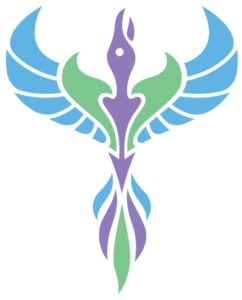Posts Tagged ‘chiropractor’
Are you Leading a Pro-Inflammation Lifestyle?
Inflammation is an individual struggle
As we age, our bodies will face their fair share of degradation and, for many of us, this will include a modicum of painful inflammation; this is a reality of nature. What is not inherent in nature is the choices we are making as a society and on an individual level that actually encourage inflammation when it doesn’t need to be there. Obesity and diabetes are the current epidemics of our age and the kind of diets that contribute to those conditions are the ones that are sure to contribute to inflammation as well.
Take stock of your habits to see if you are living a pro-inflammation lifestyle
Below you will find factors that contribute to inflammation, but only those that are within your control; genetics, autoimmune diseases, virus and injury are not included.
- Smoking
- High-sugar foods: raise the presence of an inflammatory markers called cytokines
- Saturated fats: increase adipose (fat tissue) inflammation and can simultaneously affect chronic or acute inflammation
- Too much stress and too little sleep: raise your level of cortisol, a stress hormone which is linked to inflammation.
- A sedentary lifestyle: When your muscles move, they produce anti-inflammatory substances; if you’re not moving, this isn’t happening for you.
How we help reduce inflammation in Park Slope
Chiropractic targets inflammation at the source: when joints are misaligned, inflammation is never far behind. When a joint remains misaligned, and inflammation is allowed to subside, it can create pain in the affected area. Correcting misaligned joints and reducing inflammatory cytokines are two key ways that chiropractic helps reduce the presence of inflammation. Give our office a call to schedule an appointment and start turning around a pro-inflammatory lifestyle today!
Dr. Karen Thomas, D.C.
Posture Hacks
Posture is a constant challenge
Even if we know the basics of “perfect posture,” we still find ourselves slumped over at different points of the day. What we fail to realize is that we are fighting a losing battle. Of course the human body was never meant to sit for so many hours, so even if you could maintain perfect posture for 8 straight hours, your body would still be incurring some damage.
The trick is to change your position regularly throughout the day
But this is highly unrealistic for many workers, so instead we have come up with a list of tricks to keep posture on your side.
- #1 most important: pull your shoulders back and let them relax. The computer has a way of making us look like hunched over gremlins, and pulling your shoulders back defeats this position completely.
- Following this, check that your ears are aligned with your shoulders. This will stop your head from creeping forward and destabilizing the spine.
- Place a pillow or a jacket in the curvature of your lower back to help maintain a neutral posture.
What you will notice right away is that your body, even in this new position, begins to feel stiffer even more quickly than when you were slouching. It’s OK! This is your body adjusting to a normal position and the transition period is a small price to pay for the benefits of proper posture.
Most important of all, listen to your body.
If it feels stiff, stretch. If you notice your shoulders creeping, adjust. If your circulation feels stagnant, get up and have a quick walk. You get the idea! But will you act on it?
Dr. Karen Thomas, D.C.
Deskercise: Fitness on the Job
Deskercise is about being a fitness ninja
The first step is realizing how harmful a sit-heavy lifestyle is, especially for your spine. Studies show that even 2.5 hours of vigorous exercise a week does not fully offset the harm done by sitting 70% of every weekday. So let’s be sneaky: add in a bit of strengthening and movement without even standing up by deskercising.
When the thought occurs to you, try running through this deskercise checklist.
-
Ab squeeze: tighten abdominal muscles, hold 5-10 seconds, release. Repeat 15 times.
-
Glute squeeze: tighten glutes, hold 5-10 seconds, release. Repeat 15 times.
-
Shoulder shrug: raise shoulders up to ears, hold 5 seconds, let them down. Repeat 10 times.
-
Neck resistance: Put head in hands and push against it, using neck muscles to resist. Then put hands on back of head and push, using neck muscles to resist in the opposite direction. Hold each for 5 seconds and repeat up to 5 times.
-
Leg raises: while seated, straighten legs up in the air, hold 5-10 seconds. Repeat 15 times.
You don’t have to get up from your chair and you don’t even have to stop working. As a chiropractor, I chose to focus on deskercises that target muscle groups in the core, the upper legs and upper back. These are the areas which incur the most stress throughout the work day and will leave you feeling tight. To add some relaxation into the party, practice simultaneous deep breathing to circulate oxygen through all your cells.
Deskercise is about changing attitude.
It’s not the be-all, end-all and it should certainly not serve as your sole work out routine. However, it trains your brain and body to appreciate the benefits of a little muscle stimulation during a day of heavy stagnation. This should set you on a trajectory toward moving more and relieving your body from the ill-effects of a sit heavy lifestyle.
Dr. Karen Thomas, D.C.
Making the Low Back your Best Friend
The anatomy of the lumbar region is the key to its importance.
Located in the lower back are the five largest vertebrae by diameter in the spinal column. These five bones are the literal backbone of a region whose primary importance is bearing the weight of the upper body. Exiting the spinal column at this level is a network of nerves called the lumbar plexus which influences the very basis of movement- the mechanics of the abdomen and legs.
Why is the lumbar region so often injured?
There are many answers to this question but it is most often a question of degredation: over time, the thousands of micro-movements that we put our bodies through on a daily basis compound and cause degredation of the structures and muscles which provide our stability and weight-bearing duties. This phenomenon of age is often exacerbated when we don’t take proper care of our bodies; by carrying extra weight; by letting our muscles fall by the wayside; by succumbuing to almost constant poor posture. The most common underlying causes for low back pain include:
- Muscle strain
- Disc herniation
- Disc degneration
- Bone spurs
- Breakdown of the cartilage
How we help at Community Chiropractic & Acupuncture in Park Slope
We want to first focus on prevention. If you are lucky enough to have a lower back that doesn’t cause you too much trouble, NOW is the time to start strengthening it to prevent a future of dysfunction and potential pain. Through strengthening the auxiliary muscles, teaching awareness and application of proper posture and teaching good body mechanics, we can ensure that the lower back is not overburdened. And if it is, we provide you with the chiropractic adjustment, decompression and muscle treatment therapies that make a difference in helping speed up recovery from injury. Give our office a call to schedule an appointment today.
Dr. Karen Thomas, D.C.
Expertise Award!
Acupuncture for Fertility
Acupuncture is the practice of gently inserting thin needles into strategic points along the body. There are fourteen major pathways known as meridians which regulate the flow of qi, or energy, throughout the body and its internal organs. In this immense network, there are over 2,000 points that can be used to treat all forms of body disharmony. For couples looking to become pregnant, acupuncture increases the chance of conception without the side effects associated with fertility drugs.
I am excited about acupuncture’s role in treating infertility. Acupuncture facilitates enhanced blood flow to the uterus and ovaries, which means a higher amount of nutrients flowing to the egg. It reduces stress and balances the endocrine system, which is vital to a woman’s chance of conceiving.
When stress is reduced, great things happen! Acupuncture reduces stress, which is linked to fertility in both men and women. When stress is elevated, the hormone cortisol is released in higher volumes, creating endocrine system imbalance. This balance is vital to the entire conception process. Acupuncture stimulates the release of endorphins in the brain, which negates the effects of cortisol release. Your mood will improve and so will your chances of pregnancy.
Fertility drugs do improve pregnancy chances, but are linked to side effects such as bloating, weight gain and nausea. Acupuncture, achieves the same end goal with little to no side effect. It stimulates the hypothalamus to maintain healthy homeostasis, balances the entire endocrine system and regulates reproductive hormones. I have experience and expertise to offer you in your quest to conceive. Call our office in Park Slope today at (718) 398-3100.
Karen A. Thomas D.C., L.Ac.
Replacing coffee with green tea
Green tea is no joke. If you are looking for a way to make an instant positive impact on your overall health, green tea is a great place to start. Excessive caffeine consumption can lead to muscle spasms and back pain. Compared to a cup of black coffee, which generally hovers around 95 mg of caffeine per cup (8 oz.), green tea has considerably less caffeine: between 25-45 mg/cup. However, this disparity is more than offset by the health benefits that you reap from drinking green tea regularly. Besides fighting cardiovascular disease and cancer, besides its positive effect on skin complexion and its well-documented metabolism boosting effects, green tea is also great for back health.
Green tea is a fat burner. Boosting metabolism is a great way to start losing weight. With less weight to support, the spine is more likely to achieve its maximum health potential. Weight can also cause complications when trying to heal the back from acute injuries.
Drinking green tea helps the body break down toxic compounds, keeping them from harming cellular structures in the body. It backs up the bodies natural supply of antioxidants which fight to keep your cells and molecules healthy and free from the damage of free radicals. Free radicals are molecules that are missing one electron in their outer shell; in order to fill this vacancy, they sometimes take an electron from another cell, resulting in damage to that cell. Damage occurs when free radicals set off a chain reaction and multiple cells are damaged; bones and soft tissue that support the back can be harmed by free radicals. Antioxidants work to stop these chain reactions. Green tea can help maintain healthy levels of antioxidants, including one of the most potent antioxidants known as Epigallocatechin Gallete.
Though we cannot say that green tea is the healthiest drink on the planet, we can say that replacing coffee with green tea will go a great length to helping your nervous system and overall musculoskeletal health. Green tea is just one example of diet’s affect on your overall well being. In conjunction with our chiropractic and acupuncture services in Park Slope, we offer nutritional advice to keep you feeling healthy and pain free. Our office in Brooklyn can be reached at (718) 398-3100, and we look forward to hearing from you.
Karen A. Thomas D.C., L.Ac.
The Wonders of Potassium
In keeping with the theme of nutrition and how it relates to spinal and overall health, I will highlight potassium, a common and crucial mineral found in the human body. Your body uses potassium to support a whole range of its most crucial functions- neurological signaling, kidney processes and muscle movement. It helps regulate the heart and its distribution of blood throughout the body. While it is recognized for all these effects, a less well-known benefit might be its key role in maintaining bone health. Potassium’s role finds itself in the middle of the fight to maintain fluid balance within and surrounding the cells.
As metabolic processes create acid byproducts, your blood, tissue and other fluids contribute alkaline compounds that they have captured and stored from food to create a steady pH balance. Your bones contain alkaline reserves that act as the last line of defense: when alkaline levels run low in the blood and other fluids, the bones can transfer these reserves to maintain balance. Bone structures are weakened when they are called upon to transfer their alkaline reserves.
This is where potassium steps in. Certain compounds contained within potassium act as alkalizing agents; they can neutralize the acid byproducts. They can be called upon to create fluid balance instead of draining the reserves from your bones, making them weaker. Lifestyle and national dieting trends have both contributed to a chronic shortage of potassium levels in the population. Convenient eating, processed foods and a shift away from eating well-sourced produce puts everyone in danger of potassium deficiency. The recommended daily amount for potassium intake is 4,700 mg for adults. Here are some easy food options that add significant potassium into your diet:
A medium sized baked potato = 800 mg
A medium sized banana= 450 mg
½ cup of avocado= 680 mg
½ cup of tomato paste= 1,221 mg
As we get older, we are already struggling from other factors that seek to weaken our bones. Potassium is a great tool for keeping your bones at optimal strength. Let us help you get the right amount of potassium into your diet. At Community Chiropractic and Acupuncture we practice a complementary approach to health that starts with nutrition. We then build upon this base line of a healthy diet with chiropractic treatment, acupuncture and exercise. If you are interested in finding out more about nutrition and its role in an overall body of health call our office in Brooklyn at (718) 398-3100 .
Karen A. Thomas D.C., L.Ac.
Vitamins and how to find them
Support your spine through vitamin consciousness! We can show you how at Community Chiropractic and Acupuncture in Park Slope. I want you to know what vitamins do for you and what foods to look for in your search for health. An important part of vitamin intake is making sure that the food you purchase is of a high quality. Many processed, non-organic foods are stripped of the essential nutrients they would otherwise contain. With that being said, here is an alphabetical list of vitamins and how they contribute to back health, followed by what foods contain them.
| Vitamin | Food Source |
| A: Immune system support, tissue repair | Dairy, orange fruits and green vegetables Look for: sweet potatoes and carrots, kale and apricots |
| B12: Bone marrow support | Red meat, dairy, fish and eggs Look for: fortified cereals (bran products), fortified milk, shellfish and beef liver |
| C: Collagen production (helps repair herniated discs and repair tissue). Great for the healing and repair of a worn spine. | Fruit and vegetable Look for: citrus, tomato, broccoli, green/red peppers |
| D: Calcium absorption. Keep bones strong and fight osteoporosis! | Look for:Fish oil, sunlight, mushrooms, egg yolks, and fortified milk |
| K: Calcium complement | Look for: Leafy greens, cauliflower, cabbage. Eggs and meat, particularly fish also carry vitamin K in smaller amounts. |
Having a healthy complement of all these vitamins is essential to back care, whether you are seeking to repair a damaged spine or prevent injury. There are a world of other benefits to be reaped from having vitamins in the proper proportions. If you are looking for someone in Park Slope to talk to about adding vitamins into your diet, we can help. Contact us at (718) 398-3100 or come and see us at our office in Brooklyn today.
Karen A. Thomas D.C., L.Ac.
Nutrition
Diet and Nutrition
They’re right. You ARE – and WILL BE – what you eat.
Foods. Fluids. Supplements. Dietary aids. Medicines. All contribute to the bio-chemical makeup of our bodies.
 Many people do not maintain healthy diets and may suffer from digestive disorders and other conditions aggravated by poor eating habits. Studies show that 80% of American adults are chronically dehydrated. The balance of macro-nutrients (proteins, carbohydrates, and fats), as well as micro-nutrients (vitamins, minerals, and enzymes), is essential for the cells and organs of the body to function properly. Poor supplies of macro- and micro-nutrients to the cells and tissues make it difficult for the body to work properly. Sluggish cell activity may result in overall body fatigue, susceptibility to infection, chronic inflammatory disorders – including digestive problems, arthritis, and allergies.
Many people do not maintain healthy diets and may suffer from digestive disorders and other conditions aggravated by poor eating habits. Studies show that 80% of American adults are chronically dehydrated. The balance of macro-nutrients (proteins, carbohydrates, and fats), as well as micro-nutrients (vitamins, minerals, and enzymes), is essential for the cells and organs of the body to function properly. Poor supplies of macro- and micro-nutrients to the cells and tissues make it difficult for the body to work properly. Sluggish cell activity may result in overall body fatigue, susceptibility to infection, chronic inflammatory disorders – including digestive problems, arthritis, and allergies.
In the emerging field of nutrigenomics studies show that all ‘sizes’ of nutrients do not fit all people. In other words, every individual has an optimal caloric standard, as well as a nutritional combination that best suits them. The science of nutrigenomics advocates that we adopt an ODA (Optimal Daily Allowance) to reflect this finding, and abandon the model of RDA (Recommended Daily Allowance) that is based on a generalized global ‘minimum’ of nutrients necessary to avoid disease.
The current so-called “Modern American Diet” is high in meat sources, processed foods, sweets, colas, alcohol, coffee, tobacco, and pharmacologic medications. This diet contributes to a high-acid (low pH) condition in the body that injures cells and impairs the ability of the body’s organs – including the brain – to function optimally.
The American diet and its resulting high levels of systemic acids is made worse with the sedentary lifestyle many people have adopted. Inactivity does further damage to the internal workings of the body. Lack of fresh air, shallow breathing, and reduced oxygen/carbon dioxide exchange add to the body’s acidic state.
Systemic acidosis is associated with chronic inflammatory disorders (arthritis, lumbago, headache), auto-immune diseases (RA, chronic fatigue syndrome, fibromyalgia), cardio-vascular disorders (leading to increased risk of heart attack and stroke) and even certain types of cancer.
The good news is that we are ever changing organisms and many high-risk conditions can be reversed with improvements in diet and nutrition.
At Community Chiropractic & Acupuncture, with re-education, instruction, and routine monitoring we help patients recover their health. We recommend dietary changes, vitamin and mineral supplements and new eating habits.
Increasing intake of healthy proteins like chicken, fish, or non-meat sources such as beans and nuts; fresh leafy green vegetables; complex carbohydrates, and thirst-quenching health drinks invigorate the cells, the organs, and the entire body.
With a helping hand, food choices and eating habits improve. Results become evident with more energy, less pain, clearer mental function and lost inches.
A healthy diet that includes appropriate, individually prescribed nutritional supplements, is essential to rebuilding lasting health and well-being. No one is ‘put on a diet’. We educate and encourage informed healthy choices. As you learn about and make improved food choices, you will begin to look better and feel healthier.






